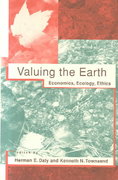Question
QUIZ 1. Which statement(s) accurately represent why the concept of comparative advantage is inseparable from the concept of opportunity cost? 2. Which statement(s) accurately represent
QUIZ 1. Which statement(s) accurately represent why the concept of comparative advantage is inseparable from the concept of opportunity cost? 2. Which statement(s) accurately represent the arguments John Kay makes with regard to the determinants of business success? 3. Which statement(s) accurately represent why John Kay argues that when evaluating a firm's success, it is important to distinguish between the attributes of the firm and the attributes of the persons in it? 4. Based on the data in Table 1 (below) and using the methods related to Kay's concept of added value, what is the added value (in millions) for McDonald's and Wendy's? Assume an interest rate (opportunity cost of capital) equal to 5%. 5. Based on the data in Table 1 (below) and using the methods related to Kay's concept of added value, what is the cost per dollar of net output for McDonald's and Wendy's? Assume an interest rate (opportunity cost of capital) equal to 5%. 6. Based on the data in Table 1 (below) and using the methods related to Kay's concept of added value, what statement is true with regard to the measured comparative advantage between McDonald's and Wendy's? Assume an interest rate (opportunity cost of capital) equal to 5%. 7. Which statement(s) accurately represent the meaning of the term Ricardian rent and why the term has the same meaning as economic profit? 8. According to the arguments of John Kay, which statement(s) accurately represent why, when measuring a firm's competitive/comparative advantage, it is appropriate to charge a firm for the capital it employs? 9. Which statement(s) accurately represent how Maital economically justifies "slotting fees" and "failure fees" in the cookie example? 10. Maital argues that "there are two major sins linked to hidden costs. . . . One sin is that of ignoring hidden costs when they are real. A second sin is the oppositetreating costs as if they were real and large when in fact they are zero." Which statement(s) accurately represent the key idea(s) behind each sin? Table 1: Financial Data McDonald's ($Millions) Wendy's ($Millions) Revenues 27,441 2,061 Cost of Goods Sold (Materials) 15,446 1,400 Wages and Salaries 2,488 274 Capital Employed 31,534 3,806
Step by Step Solution
There are 3 Steps involved in it
Step: 1

Get Instant Access to Expert-Tailored Solutions
See step-by-step solutions with expert insights and AI powered tools for academic success
Step: 2

Step: 3

Ace Your Homework with AI
Get the answers you need in no time with our AI-driven, step-by-step assistance
Get Started


